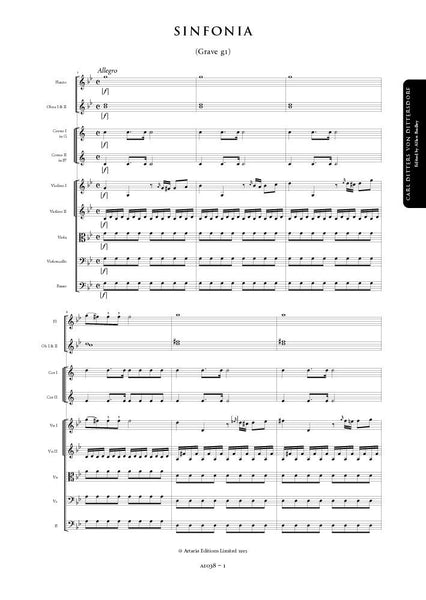Dittersdorf, Carl Ditters von: Symphony in G minor (Grave g1) (AE038) – sheet music
Previous Product Next Product
Description |
Dittersdorf, Carl Ditters von (1739-1799)
|
||||||||||||||||||
Audio sample |
|||||||||||||||||||
Details |
The present work, one of Dittersdorf 's most striking minor key symphonies, was written no later than 1768, the year Stift Lambach acquired a copy. The symphony survives in seven sources and is also listed in three important thematic catalogues of the period: Lambach (1768), Breitkopf (Supplement VI 1772) and the Quartbuch (1775). Interestingly enough, the date 1768 coincides with the earliest of Haydn's so-called 'Sturm und Drang' symphonies, No.39 in g minor. The two works are very different in compositional approach although inhabit a similar emotional world. Significantly, a copy of Dittersdorf's symphony preserved in the Austrian National Library (S.m.15957) bears an attribution to Joseph Haydn. Dittersdorf's penchant for experimentation manifests itself in a novel way in this symphony. The development section of the first movement at once introduces new and seemingly irrelevant thematic material which serves as the basis for extensive modulatory extension. The logic of this is not made apparent until the Finale when an almost identical development section occurs but this time clearly based on the strong triadic opening theme. Thus, Dittersdorf brilliantly achieves an organic unity between the first and fourth movements of the symphony not by reusing earlier material in the Finale but by anticipating the development section of the Finale in the opening movement. This edition is based on a set of manuscript parts now preserved in the Musikarchiv at Stift Kremsmnster (Ser.H Fasc.33 Nr.293). The wrapper reads: 'Sinfonia / a / Violino Primo / Violino Secondo / Flauto Traverso / Oboe Primo / Oboe Secondo / Corno Primo in G / Corno Secondo in B / Violoncello Fagotto / Viola à Basso / Del Sigre Carlo Ditters". In the absence of both the autograph score and an authentic set of parts, the edition presents as faithfully as possible the intentions of the composer as transmitted in the Kremsmnster source. The style and notation of articulation and dynamic markings have been standardized throughout, and, where missing from the source, reconstructed from parallel passages. These are indicated by the use of dotted slurs or brackets where appropriate. Like most eighteenth century sources, the present manuscript is inconsistent in its notation of appoggiature; these too have been standardized to minimize confusion. Obvious wrong notes have been corrected without comment; editorial emendations with no authority from the source are placed within brackets. Allan Badley |
||||||||||||||||||
Score Preview (best viewed in full screen mode) |
|||||||||||||||||||















